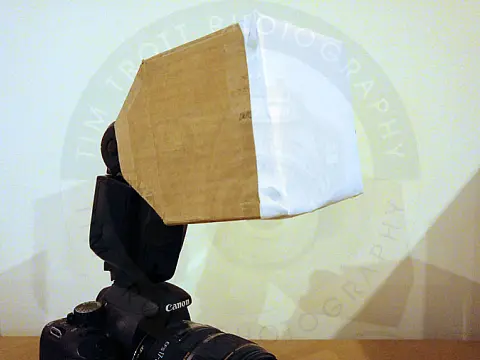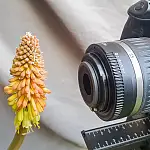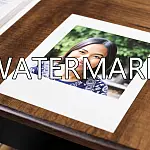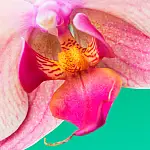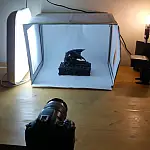Photographing the Refraction of Light through WaterWe show you and easy way to capture amazing effects like the refraction of light through a glass of water with a patterned background.
One of the most often-seen phenomena and a perennial favourite of photographers is the refraction of light. While discussing the effects of bending light waves may sound like difficult labour, it is a rather easy photography effect that you can duplicate anywhere.

In this tutorial, we'll create a spectacular artistic abstract by utilising the refractive qualities of glass and water. You probably notice this effect every day, and all it takes to observe it is to look into a glass of water. But we're going to go a step further and manage the outcome for original outcomes.
Using a background of diagonal black and white stripes, we'll bend, twist, spin, and skew the lines to create unique abstract shapes by using the distorting qualities of water and glass.
The learning curve for this approach is not too steep. Just look into a glass container that has been filled with water to witness the refraction's distortions in action.
What You'll Need
The lighting is simple, so an ordinary flashgun mounted on a camera and bounced off the ceiling will be more than sufficient. To get spectacular results, you don't need expensive equipment or difficult photography techniques. All you need is a plain table top. Therefore, let's get going and see how it's done.
Equipment Setup
You will need to create a straightforward background for this project. An office laser printer was used to print a diagonal black and white stripe that was made in Photoshop. It doesn't have to be overly elaborate. It's worthwhile to experiment with various designs, or you might even add some colour.

Camera Settings
In front of the backdrop, place pristine drinking cups and fill each one with varied amounts of water. For maximum depth of field and sharpness, use a tiny aperture, such as f/16. Use a tripod because even slight adjustments to the camera angle will vary how the pattern is reflected by the glass and water.
Daylight can be ideal, but since we're shooting in low light, we'll be utilising a flashgun here. Ideally, you should steer clear of any distracting reflections on the glass, which is simple to do by simply reflecting the light off the ceiling. Simply aim the flashgun upwards to accomplish it.

